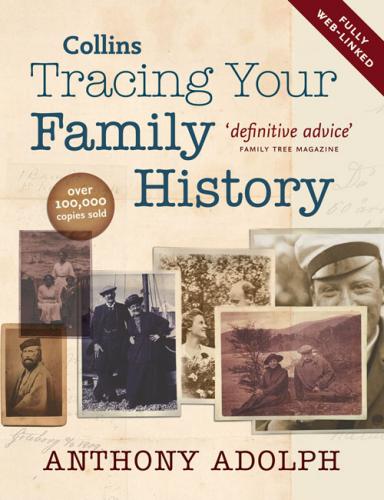SEARCHING THE ORIGINAL RETURNS
In other cases, it may pay you to look in the original returns for where you think the family may have been living at the time – which you can often work out from General Registration certificates and directories (see Chapter Eight). The old census indexes will help, but if the place was small enough you can just scroll through the relevant sections of the microfilms, being guided by the front of each enumeration book, which describes the exact route taken by the enumerator. This will take you on a fascinating journey, house-by-house through your ancestral area, quite possibly encountering others of your surname, and giving you a real feel for what the area was like, what people were up to, and so on. You can get used to the enumerator’s handwriting, making it easier to spot names that may have been misread or wrongly transcribed in the indexes.
If the family lived in a town, you could be faced with a very lengthy search. However, the archives that hold censuses on microfilm will usually have street indexes – they were created for all towns of over 40,000 inhabitants (and many were compiled for smaller settlements). The main sources for finding ancestral addresses are General Registration certificates and directories (see Chapter Eight).
To find the town or village you want, type the place and census reference (ie, HO 107 for 1851, etc) into www.catalogue.nationalarchives.gov.uk. Alternatively, use the Place Name Indexes provided for each census in the Family Records Centre search room and most county record offices and libraries which hold local census returns. These will provide you with a page number for the corresponding Reference Book to learn the ‘piece number’ covering that place. Each census from 1841 has a code, starting with HO107 for the 1841 and 1851 censuses, and then sequentially from RG9 for the 1861 census, RG10 for 1871, and so on. The census microfilms (1901 is on microfiche) are arranged by piece number, so the relevant one can be easily found.
You now need to locate the relevant place on the microfilm or fiche. Each piece contains a number of numbered Enumeration Districts (EDs) or, in the case of the 1841 census, Enumeration Books. The Reference Books also provide the number(s) of the Book(s) or ED(s) covering the place you want (a large town will be covered by a number of EDs, whilst in rural areas an ED may cover a number of small villages). Hartlebury, Worcestershire, is referenced RG 12/2342 in the 1891 census. This leads you to the right section of the film, enabling you to start searching through the pages covering the relevant place, looking for your ancestor.
Once you find the entry you want, obtain a photocopy or write down everything including the reference numbers, details of the parish, sub-district and so on at the top of the page, and all the information about the household. It is also worth noting the immediate neighbours: even if they have different surnames, they might turn out to be close relatives. Equally, if your search fails, write down exactly what you searched so that the work can be continued another time, and of course a negative search will at least tell you where your ancestors did not live.
DATES OF CENSUSES
TNA REFERENCE NUMBERS FROM 1841
| 10 March 1801 | (no records at TNA) |
| 27 May 1811 | (no records at TNA) |
| 28 May 1821 | (no records at TNA) |
| 30 May 1831 | H0 71 |
| 6 June 1841 | H0 107 |
| 30 March 1851 | H0 107 |
| 7 April 1861 | RG 9 |
| 2 April 1871 | RG 10 |
| 3 April 1881 | RG 11 |
| 5 April 1891 | RG 12 |
| 31 March 1901 | RG 13 |
| 2 April 1911 | RG 14 |
Part of a page from the 1901 census.
WHERE TO SEARCH
CENSUS RETURNS OUTSIDE ENGLAND&WALES
An extraordinary guide to census returns around the world is published in the somewhat unlikely guise of G. Johnson’s Census Records for Scottish Families at Home and Abroad (Aberdeen and North East Scotland FHS, 1997).
SCOTLAND
IRELAND
The 1901 and 1911 returns, which were filled in by the householders (or enumerators on their behalf), have survived and are on open access, arranged by Poor Law Union and then by district, parish and townland, which are indexed. They list names, age, gender, religious denomination, marital status and relationship to the head of the household, but the place of birth is no more precise than the county or city, or country if born outside Ireland. The 1911 returns state how long women had
